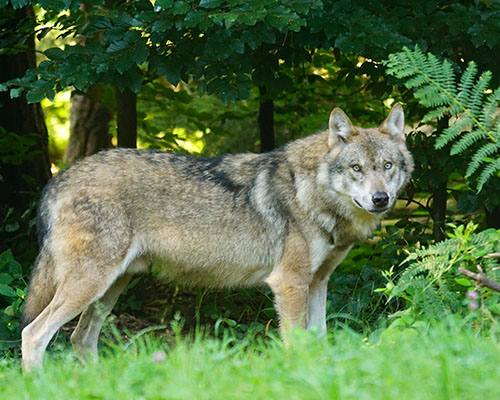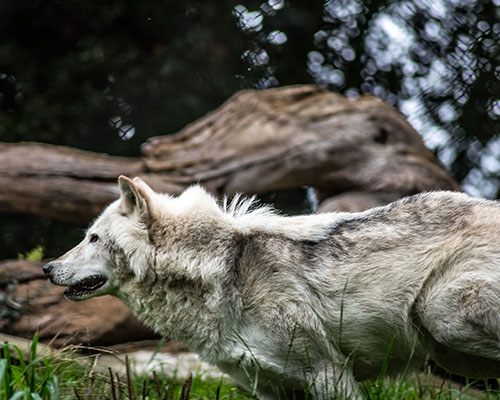Wolves are the biggest members of the canine family, but within the species, there are a variety of types, some larger than others. Wolves are a mysterious species that live in the woods. In this composition, we’ve listed the 11 biggest wolf species in the world.
Mackenzie Valley Wolf
The Mackenzie Valley Wolf additionally acknowledged as the Canadian Timber Wolf is presently the biggest wolf breed in the world. They get their identity from placing around a particular vicinity in Canada known as the Mackenzie River Valley. You can additionally locate them in different components of Western Canada and Alaska.
Weighing in at about one hundred seventy-five pounds, these wolves can be up to 7 toes long. These stats are indispensable to their survival at excessive altitudes, giving them extra room for greater organs like their lungs.
Eurasian Wolf
The Eurasian Wolf populates international locations in Western Europe, Russia, Scandinavia, and China. It’s bought a skinnier construct than different wolves, however, it is nonetheless pretty large at around 5 ft in size and up to one hundred sixty pounds. Their coats can be located in many colors, however, are generally coarse and short.
Tundra Wolf
The Tundra Wolf can be as long as the Mackenzie Valley Wolf, so it is also the biggest wolf in the world. But it doesn’t weigh as much. You can find these wolves substantially in the coldest corridor of Russia. It grows an extremely thick fleece to isolate it from harsh conditions. Their reflections correspond to caribou and bison. To conserve its energy, it tends to hunt only the weak creatures within a herd.
Alaskan Interior Wolf
The Alaskan Interior Wolf haunts the semi-cold areas of Alaska and the Yukon. It’s additionally known as the Yukon wolf, the biggest wolf in the world. Within their pack, they tag-team looking by way of surrounding their prey from all sides. The most frequent color of these wolves is black, however, they are additionally gray in color. They are normally 6½ toes lengthy and one hundred twenty pounds.
Great Plains Wolf
The Great Plains Wolf is about as long as the Yukon Wolf, the biggest wolf in the world, but not relatively as hefty in weight. This species has potentially had the biggest megahit to its population, as it was hunted to near extermination at one point. It’s the most common species in the United States and only has a pack size of about 5 or 6.
Dire Wolf
The honorable point out goes to the Dire Wolf because, even though it is an extinct species of wolf, it used to be at one factor the biggest wolf in the world. It ought to develop up to a hundred seventy-five pounds. Though they are very carefully related, scientists are discovering that Dire Wolves truly want their personal species category.
Himalayan Wolf
Larger than its geographic neighbor, the Indian wolf, the Himalayan wolf measures around 3.75 toes in length. The Himalayan wolf stands 30 inches on top at the shoulder. Its common weight is seventy-seven lb, which is the same as a person male German Shepherd. Thus, it is called the biggest wolf in the world. They subsist especially on Tibetan gazelle, however, their weight-reduction plan additionally consists of Himalayan marmots, wooly hares, and pikas.
Himalayan wolves roam all through the Himalayas, the Tibetan Plateau, and the highlands of Central Asia. They are tailored to stay at excessive elevations, in contrast to most wolves that choose lower, greater oxygen-rich environments. While the Himalayan wolf’s taxonomy is up to debate, some biologists argue that it is an awesome subspecies.
Currently, the Himalayan wolf is listed as Endangered in accordance with the IUCN. While India, Nepal, and China ban looking wolves, worldwide change continues to threaten their populations.

Mongolian Wolf
From its nose to its tail, the Mongolian wolf measures from 3 to 5 bases in length. The altitudinous Mongolian wolves can stand nearly 35 elevations altitudinous. Weights can vary, but utmost samples weigh from 57- 82 lb. They’re lower in elevation than European wolves and generally have a slightly narrower nib. It’s analogous in appearance to the Himalayan wolf, and debates about its taxonomy are ongoing.
Mongolian wolves are native to Mongolia, central and northern China, and Russia. Their range has shifted in recent times due to the expansion of mortal agreements and the decline in the population of Siberian barracuda, its principal rival for food. Prey include saiga as well as domestic beast.
Known as “ the biggest wolf” in Mongolian, wolves are sometimes killed by herdsmen to cover their beast. The trade of their fur, vengeance payoff and hunting combine to hang Mongolian wolf populations. No protections presently live for Mongolian wolves, and their total number is unknown.
Red Wolf
The red wolf is a distinct species of wolf that’s a cross between the runner and the argentine wolf. It is also the biggest wolf in the world. They get their name from their iconic sanguine tinge, although colors can vary between wolves. Red wolves generally are around4.5-5.25 bases long and weigh between 50- 85 lb. Some biologists liken them to greyhounds due to their long and slender shapes.
Red wolves are native to the southeastern regions of the United States. While further sociable than bootleggers, they’re less companionable than argentine wolves. Their diet consists of rodents, rabbits, white-tagged deer, and nutria.
Although they were formerly wide throughout the southeastern countries, red wolves went defunct in the wild due to stalking and niche loss. moment, the IUCN lists red wolves as a Critically Exposed species. utmost live in prison or specially designated wildlife harborages. Still, released red wolves living in the wild continue to face pitfalls from nimrods.
Steppe Wolf
Also regarded as the Caspian Sea wolf, steppe wolves weigh on common between 77-88 lb. They are no longer as massive as Eurasian wolves, their closest neighbor, and their hair is shorter and sparser. Both of them are the biggest wolves in the world. The steppe wolf receives its title from the steppe areas of Eurasia, the place it is a native subspecies.
Steppe wolves can be determined at some point in the Caspian steppes, the Caucasus, the decreased Volga region, and southern Kazakhstan. Occasionally, villagers will hold them as defend animals. Their weight-reduction plan consists of Caspian seals, rodents, and fish. However, hungry steppe wolves might also additionally devour berries and different vegetation to survive.
Many steppe wolves stay shut to human settlements, and they often assault livestock. Since they are prison to hunt in sure regions, steppe wolves are at chance due to looking by using herders attempting to defend their animals. Hunting is the foremost motive for the decline in steppe wolf populations and has led to the IUCN recording them as an Endangered species.
Arctic Wolf
Also known as the white wolf or polar wolf, arctic wolves measure between 3-5 feet long. They are smaller in stature than northwestern wolves, standing around 2-3 feet tall Arctic wolves generally weigh 70-125 lb. However, they look much more prominent due to their thick, waterproof coats that keep them dry in subzero temperatures. Therefore, it is also the biggest wolf in the world.
Arctic wolves live throughout Greenland, Alaska, Iceland, and Canada. Since the frozen Arctic ground makes digging dens difficult, they typically seek shelter in caves or rocky outcroppings. They subsist on a diet of Arctic hares, caribou, and muskoxen. An arctic wolf can go 4 or 5 months without eating and can eat up to 20 lb of meat in a single meal.

